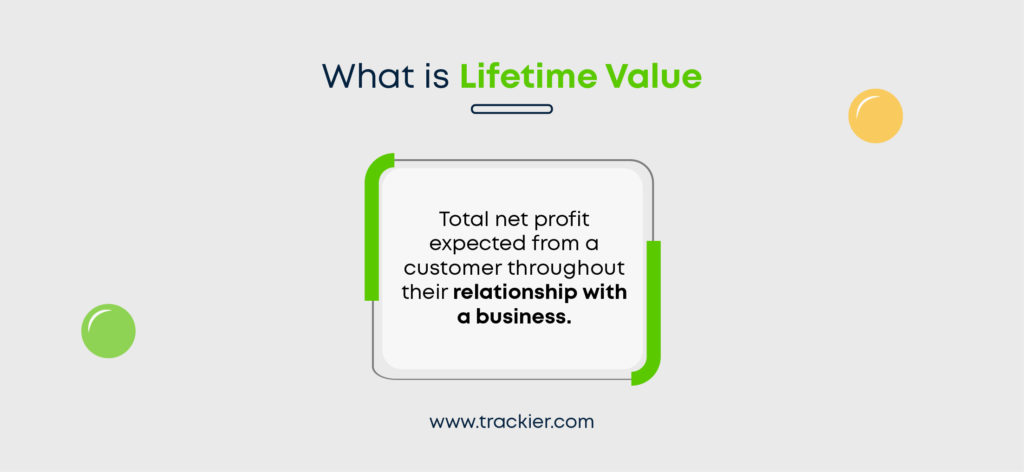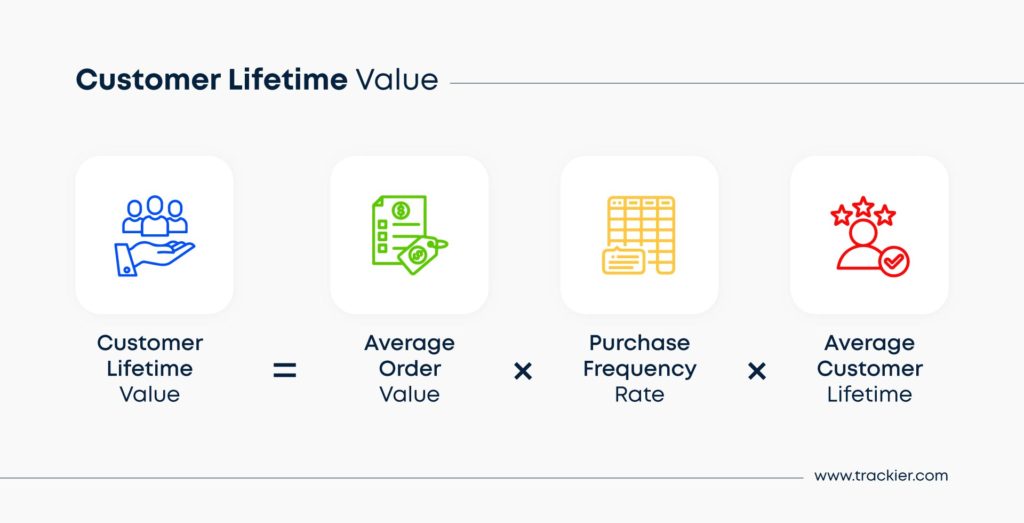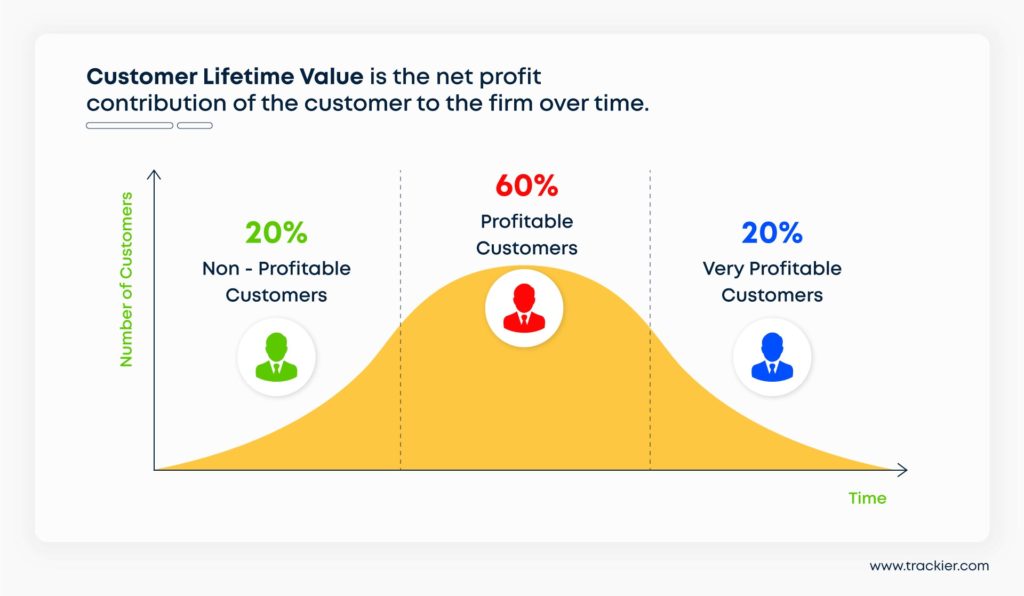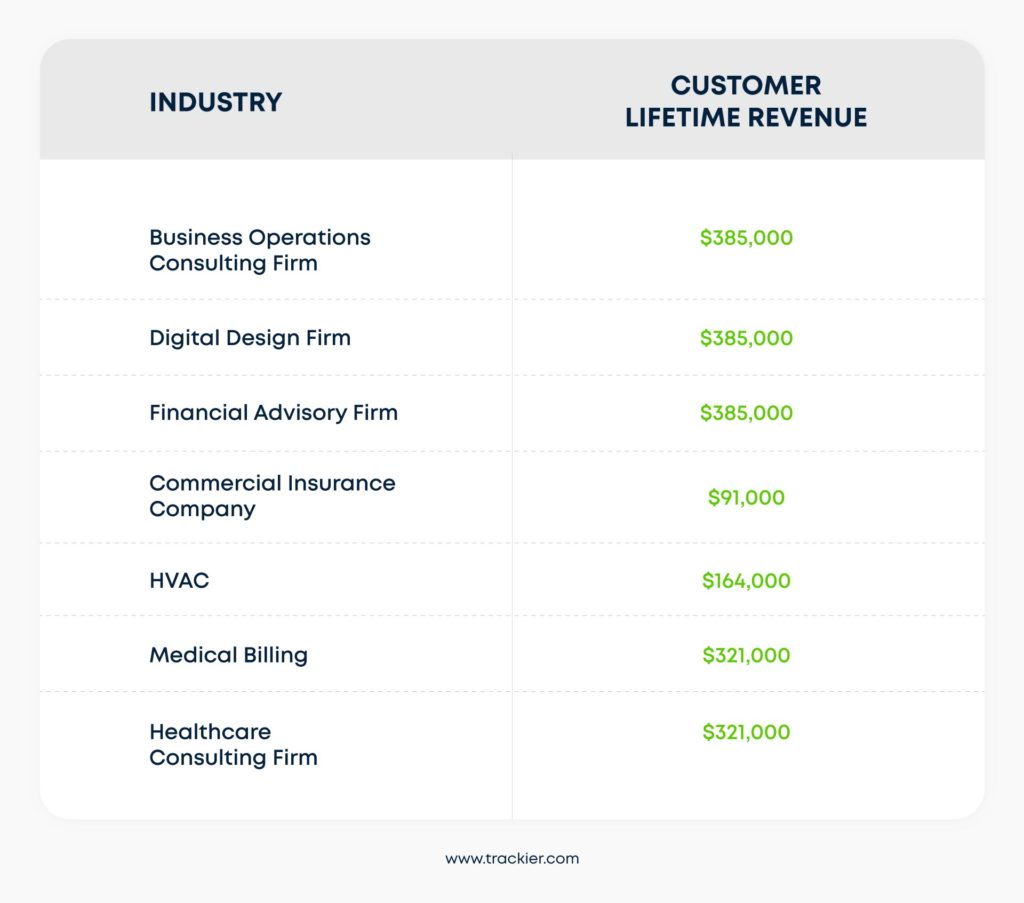Lifetime value, or LTV, is an estimate of the average revenue a customer will generate over the time that they use a given product or service. In other words, Lifetime Value is also the net profit expected from a customer throughout his lifetime with a business. Higher LTV means higher profitability and revenue generation by a customer. High LTV customers need to be nurtured and retained through a series of retention marketing strategies to keep them from picking up the competitors.
What is Lifetime Value?
Lifetime value is a core metric in mobile business growth, often used to determine how valuable a user is over the span of time that they’re using an app. LTV is represented in $ (dollars) or any preferred currency by a business.
LTV Formula: How to Calculate Lifetime Value
There are many ways to calculate Lifetime Value, depending on the type of business. If you have a SaaS, simply divide the average monthly amount expected from each customer by the churn rate. For example, if your SaaS costs $1000 per month and the churn rate is 10% then your LTV is 1000 divided by 0.1 or $10000 and your customer’s expected lifetime is 10 months.
For the non-subscription model, the Lifetime Value is calculated by the total income you expect to gain from a new customer throughout his lifetime with your business. You can calculate this by multiplying the average order value by the number of expected purchase frequencies and the time of engagement.
Another alternative method to calculate your customer lifetime value is ARPU x 1/Churn. ARPU is Average Revenue Per User.
Simplest Customer Lifetime Value Formula
The simplest formula to calculate LTV is given below:
Lifetime Value = {Customer Revenue Per Year x Duration of the Relationship (In Year)} – Total Cost of Acquiring & Serving the Customer
However, this formula is relevant for those businesses where the numbers are more likely to remain unchanged on a year-on-year basis.
Factors to Consider While Calculating the Lifetime Value
For businesses with more complicated models, customer lifetime value is not a simple calculation. A number of factors have to be considered while calculating the LTV. This is why some businesses don’t consider investing in calculating the Customer LTV.
Integrating data from multiple sources of an organization’s operational departments is essential to calculate the LTV and mitigate the challenge mentioned above.
Alternately, Customer Lifetime Value can also be calculated in the following way:
- Identify touch points where your customer creates value and revenue for your business.
- Create an approximate customer journey and calculate the revenue generated at each touch point.
- Add the revenue at each stage to calculate the Lifetime Value of that particular customer.
- You can calculate the customer LTV of each type of customer/cohort in the same way.
What is a Good Customer Lifetime Value?
There is no straightforward answer to this question. The average Customer LTV depends on the industry and the business model. Below is an infographic of the average customer lifetime revenue generated by customers according to the industry.
The Average CLV:CAC Ratio
To identify the health of your business, it is important to find out the CLV:CAC Ratio – A ratio between Customer Lifetime Value and Customer Acquisition Cost. In an ideal setting, CLV is higher than CAC for a business to be sustainable, therefore, ideally a CLV:CAC Ratio should be greater than one.
For a SaaS business, a CLV:CAC ratio between 2 to 3 is considered sustainable. If the ratio is lower than 2, it means you’re spending too much to acquire new customers while the customers are not bringing much revenue to your business. A ratio greater than 3 implies that your business is doing great, and you can redirect some resources toward expansion and diversification.
Why is LTV important?
By properly optimizing revenue streams like in-app purchases, in-app advertising, and subscriptions, LTV helps marketers pinpoint exactly how much money they can afford to spend on user acquisition while remaining profitable.
Combined with the average revenue per user, lifetime value is a golden metric to determine the total prospective revenue or value of your users. In the free-to-install app economy, it’s an essential metric to measure business health.
Here are a few key benefits of measuring LTV
You can’t improve what you don’t measure
Once you begin measuring LTV and breaking down the various components, you’ll be able to employ more targeted strategies around pricing, advertising, and user retention with the goal of continuously improving your UX and increasing profit.
Make better user acquisition decisions
When you know what to expect in terms of average earnings per user, you can increase or decrease spending to ensure you maximize profitability and continue to attract the right audience.
Improve forecasting
LTV predictions can help you make forward-looking decisions around ad spending. LTV forecasting minimizes the risk of underspending and missing out on potential business or wasting money by overspending.
Boost customer loyalty and retention
When a company consistently provides value in the form of a great, intuitive app, excellent customer support, or an excellent loyalty program, customer relationship and retention tend to soar.
You can increase retention by focusing on users who have a higher LTV. A lower churn rate, more referrals, and favorable reviews are all indicators of more loyal customer.
Drive recurring purchases
LTV enables you to track the annual or lifetime usage of your users’ web or app visits and use that information to plan ways to boost repeat business.
Charge up profitability
In general, higher LTV results in greater profits. By keeping users for long term and building a model that encourages them to spend more, you should see the benefit show up on your bottom line.
How to Increase LTV?
Increasing Customer Lifetime Value (CLV) is all about nurturing relationships with your customers. So naturally it follows that in order to boost your LTV, you have to invest in fostering positive connections with your existing customer base. There are multiple ways to do so, and collectively, it is also called Retention Marketing.
Ranging from Loyalty Programs to Personalized Offers, there are several ways to retain customers and eventually increase their LTV. If you’re on a budget, you can check out this blog to get an idea on how to go about building a retention marketing strategy without burning a hole in your wallet.














